Bourbon County
Bourbon County, the fifth county in order of formation, is located in the central Bluegrass region, and has an area of 292 square miles. Its boundaries originally extended northward to the Ohio River and eastward to the Big Sandy, taking in land that has since been split into more than thirty counties. Virginia subdivided Fayette County in 1785 and honored the French royal family by naming the fifth western county Bourbon. It was rich in timber, cane, pasture grass, fertile soil, and limestone and had many creeks and springs. Early Bourbon settlers claimed choice farmland and built homes, mills, taverns, warehouses, businesses, churches, and a courthouse on the hill near the confluence of Houston and Stoner creeks. The county seat, Hopewell (renamed Paris in 1790), became an economic center as the population grew in the early 1800s. Millersburg, North Middletown, Little Rock, Ruddles Mills, and Clintonville remained small villages.
Mainstays of the agrarian economy were corn, whiskey, hemp, tobacco, sheep, and horses. The Bourbon Agricultural Society dominated economics and politics into the twentieth century. The unique bourbon whiskey, aged in charred barrels, led to the proliferation of distilleries and taverns in the antebellum era. Religion provided the primary social and cultural life into the Civil War. Rural churches, especially the Cane Ridge Meeting House (1791), held frequent religious revivals. For decades before the Civil War, the Cane Ridge area endorsed emancipation. Slaves and citizens enjoyed harmonious relations and shared religious experiences in integrated churches until the 1870s.
By the 1830s the county court devoted most of its attention to local improvements. The powerful courthouse leadership sponsored turnpikes, bridges, macadamized county roads, and even railroad bonds in the antebellum period. Bourbon County adhered to the Virginia tradition of a natural aristocracy, and Gov. James Garrard (1796-1804) and his family dominated the early era. Planters and lawyers controlled local politics into the 1860s. Leaders were conservative, educated, and wealthy. The Civil War splintered families as brothers fought brothers. In the post-Civil War years, Bourbon County residents, who had generally been Unionists, joined the Democratic party and began electing former Confederates as leaders. Conflict between the county and city governments accelerated as blacks and businessmen developed a Republican alternative in Paris. The Western Citizen, founded in 1808, became the voice of the Democratic Party but provided balance and moderation on most political and social issues. Although the war was the catalyst for a new society, the economy remained agrarian. Bourbon County continued to rank near the top in Kentucky in production of corn, tobacco, hemp, sheep, cattle, and horses, giving the wealthy citizens a high standard of living.
Political patterns remained constant into the twentieth century. Four generations of Patons served as county clerk for some seventy years. George Batterton was elected to a record eight terms as county judge (1917-49), John T. Hinton served five mayoral terms in Paris at the turn of the century, and George Doyle was elected Paris mayor six times (1929-53). New leaders emerged at mid-century as bitter political divisions reflected state politics. The Kentuckian-Citizen, successor to the Western Citizen, supported the regular Democratic machine, while the new Paris Daily Enterprise of the Republican Alverson family represented the A.B. Chandler faction. The death in 1965 of Paul Brannon, the wily Citizen editor, ended the most controversial newspaper war in county history.
Public education gained momentum when William Garth bequeathed to the county his estate, which became the base for one of the largest educational funds for disadvantaged children in the state. The Garth Fund still pays students' secondary and college expenses. The county's higher education institutions included North Middletown Classical and Business College, Millersburg Female College, Millersburg Male Methodist College (Wesleyan), and Bourbon Female College in Paris. Professor George Chapman promoted night school programs, bond issues, and a quality black high school (Paris Western). World War I and the 1920s ushered in the golden age of education in Bourbon County. Lee Kirkpatrick, superintendent of the Paris schools (1918-53), created a renowned educational system with his strong academic background, ethical emphasis, and administrative leadership. He hired high-quality faculty and attracted citizen participation. At Paris Western, black educator FM. Wood tested policies and reforms put into effect when he became president of Kentucky State University. Millersburg Military Institute and the newly consolidated Bourbon County High School underscored the county's reputation for educational excellence.
Citizens repeatedly approved railroad expansion and bond issues in the postwar era. The Louisville & Nashville Railroad (now CSX Transportation) expansion of 1905 is estimated to have increased the local population by a thousand. The new wealth explained the success of eight local banks, five with half-million-dollar assets. In 1914 the old aristocratic Alexander Bank failed amid embezzlement charges, and thirty indictments ruined directors, depositors, and family names. This scandal forced banking reforms, and two leading million-dollar banks were formed by mergers: People's Deposit and Bourbon Agricultural.
The agrarian economy changed slowly in the 1900s, when horse breeding and burley tobacco became dominant. Arthur B. Hancock, Sr., of Claiborne Farm, became America's top horse breeder, having won many honors in the 1930s. Virgil Chapman, of Paris, was Kentucky's leading spokesman for tobacco interests while serving as a congressman (1925-29, 1931-49) and U.S. senator (1949-51). By the 1950s, however, industry began to challenge agriculture as a source of jobs in the rural county. School integration, a small industrial boom, the decline of both newspapers, agricultural problems, and new leadership seemed to point to dramatic change as Bourbon County celebrated its 1986 bicentennial.
The population was 18,476 in 1970; 19,405 in 1980; 19,236 in 1990; and 19,360 in 2000.
From: The Kentucky Encyclopedia, edited by John Kleber. University Press of Kentucky. Copyright 1992
Bourbon County Photos
1) Click any image to view larger photo and caption
2) Hold mouse over photo when it opens, and click "Next" in the top right corner
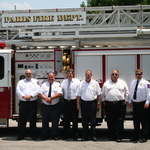
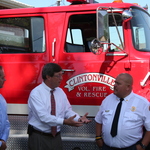
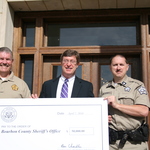


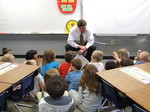
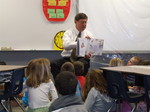
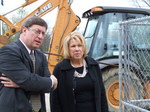

Share this Page






